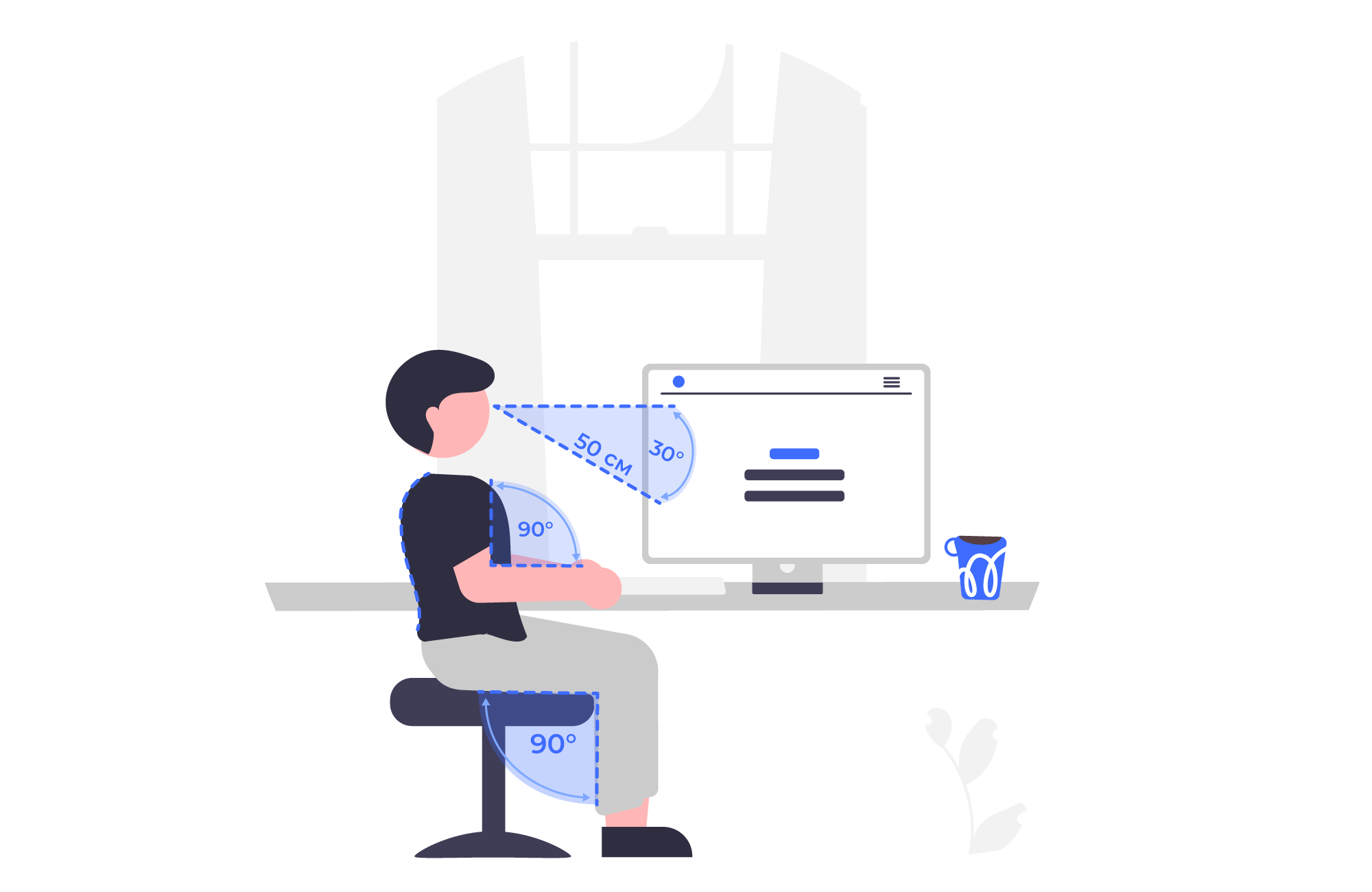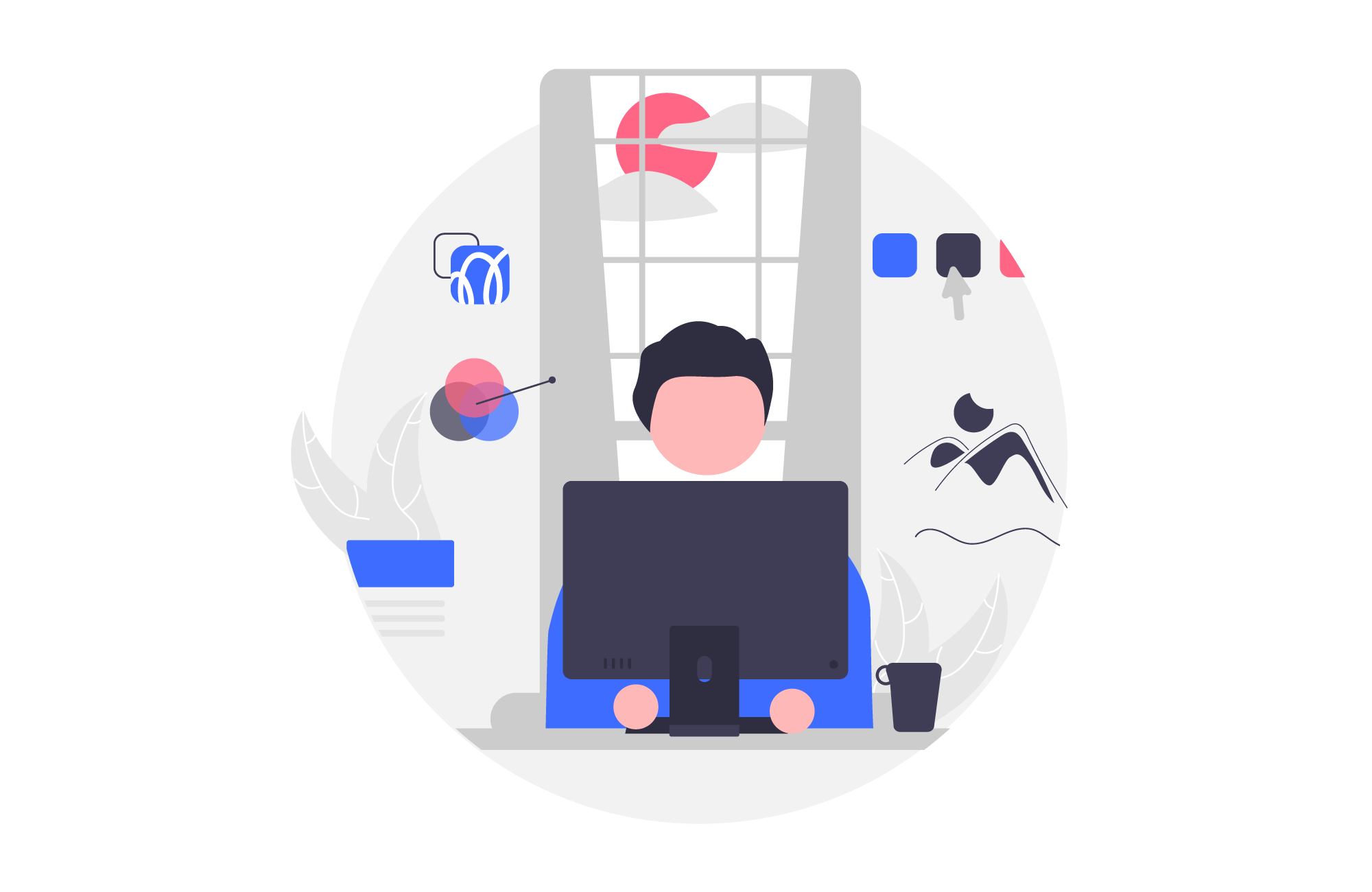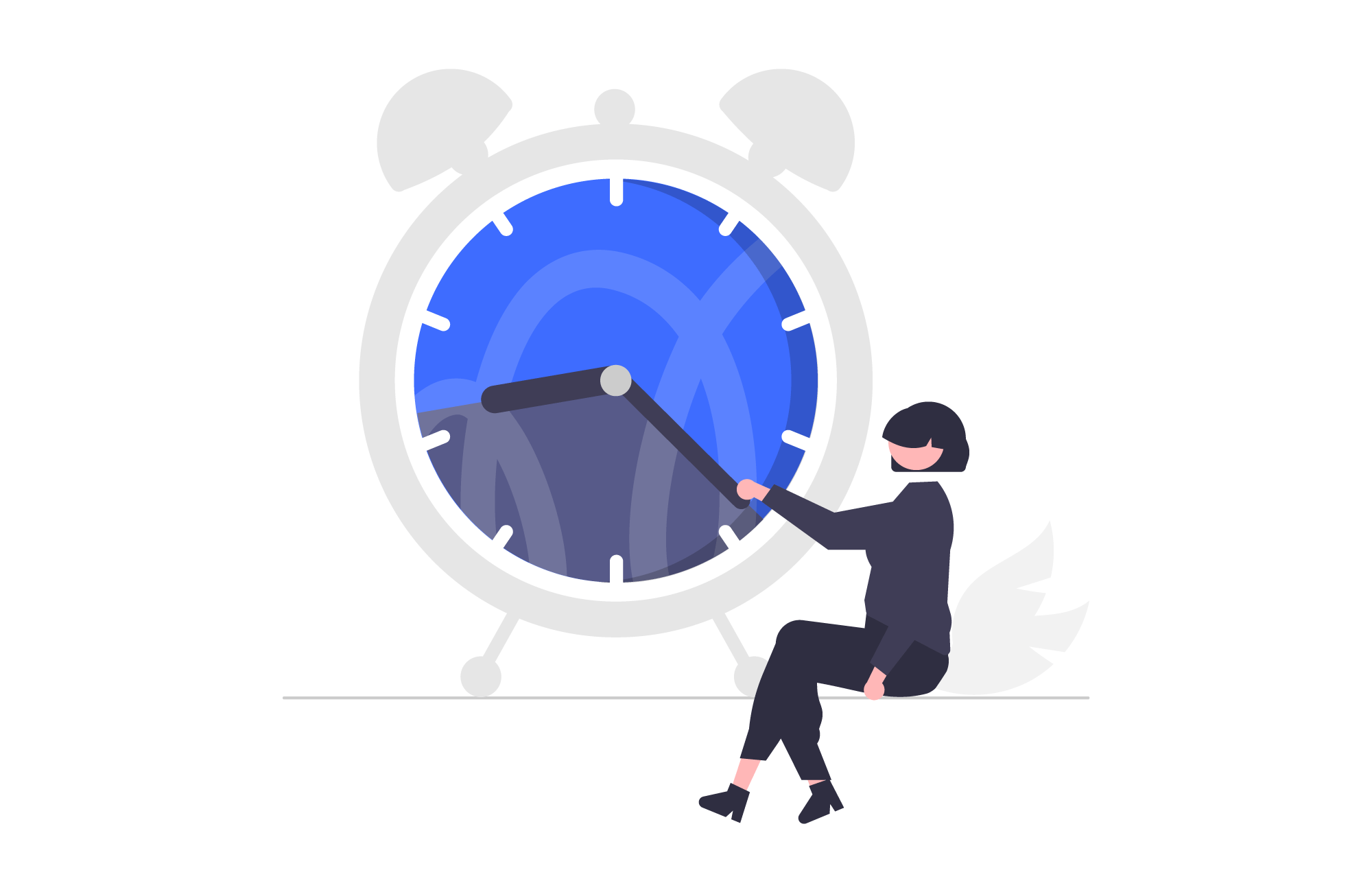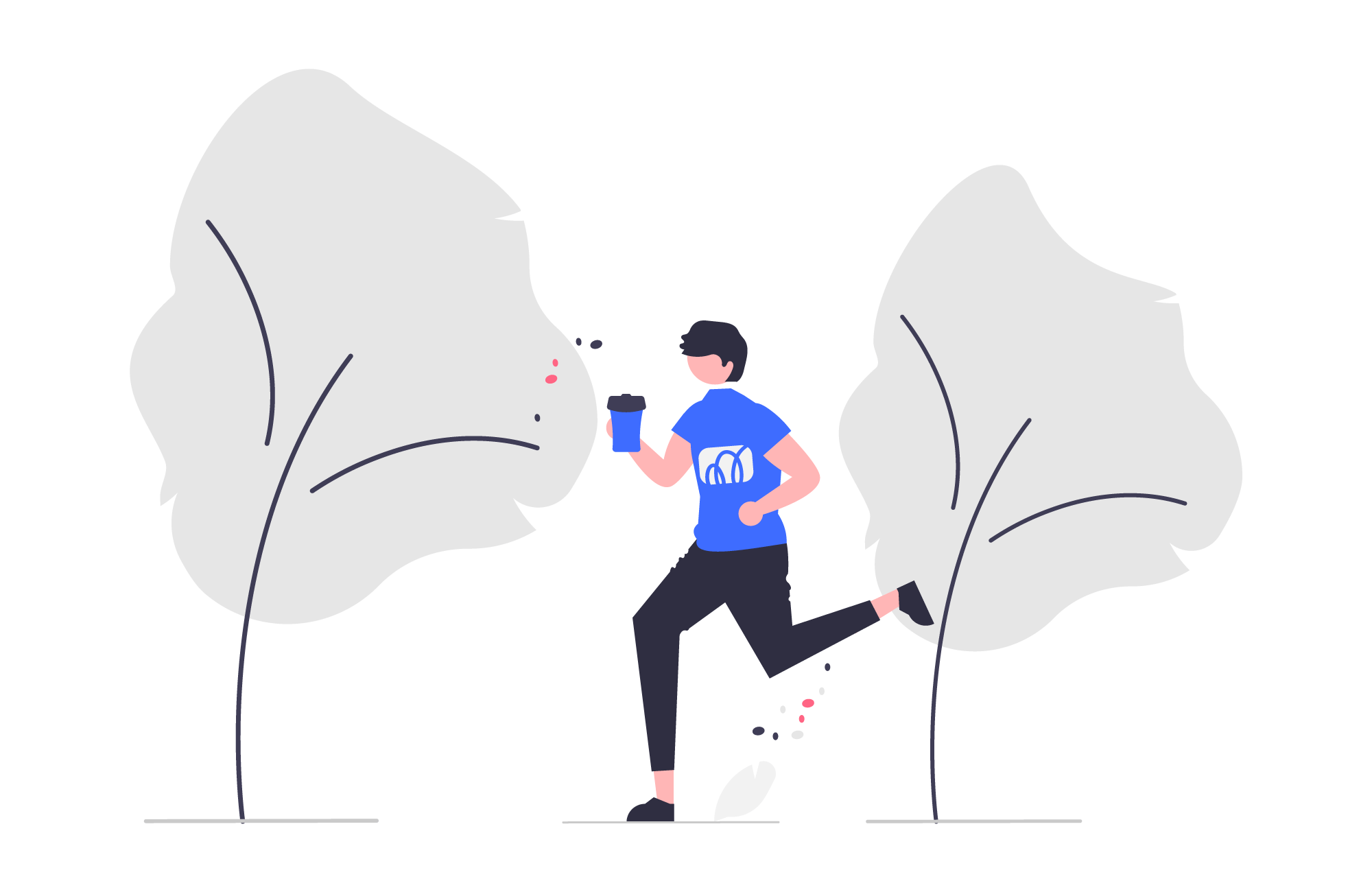How to work from home: organizing space, routines and time
Working from home can be a real challenge: the household distractions, the bed beckons and the fridge calls every minute. But with the right approach, you can turn your day into a productive and organised one. Here are some tips to help you achieve this.

1. Create a workplace
Working from home requires a comfortable and functional workspace. Create a special place to work where you won't be distracted, so that it promotes productivity and comfort:
1.1 Select a suitable location
- Separate area: If possible, set aside a separate room or corner for work. This will help to separate your work and personal space.
- Avoid high-traffic areas: try to choose a place where you won't be constantly distracted by household or street noise.
- Window: position your workspace to take advantage of natural light, but avoid direct sunlight, which can cause glare on your device screen.
1.2 Organise your workplace
Invest in comfortable furniture. It's important that it has enough space for all your essential accessories, and is comfortable for long periods of time in a static position, as well as maintaining a proper back and neck position. As a rule of thumb, most people need:
- Desk: It should be spacious enough for your computer, documents and other necessary items. If you don't have a separate office, choose a compact but functional desk that can easily blend into your room. Also consider height-adjustable desks for standing work, sometimes changing positions can help reduce strain and fatigue.
- Chair: choose an ergonomic chair with height and tilt adjustments. This will help prevent back and neck problems.
- Other accessories: there's a huge choice here and you probably know better than we do what you need and probably don't need any advice. And if you don't, we've prepared some recommendations for you in point 1.4.

1.3 Organise lighting
Provide adequate lighting for the entire workspace so that you don't strain your eyes. Use a desk lamp with adjustable light. This will help you focus on details and reduce eye strain.
It is also important to position the computer screen to avoid glare from light sources.
1.4 Make the space comfortable and functional
- Storage: Organise storage systems for documents, stationery and other essentials. Shelves, drawers or organisers can help keep things tidy.
- Cables: Use cable organisers to keep cables tangle-free and out of the way. Sometimes hidden wires can also keep you from prematurely upgrading your monitor.
- Accessories: If your monitor cannot be adjusted in height, we recommend a stand to improve ergonomics and viewing comfort, as well as reduce neck strain.
1.5 Create a comfortable environment
- Temperature: Ensure a comfortable temperature in the workspace. If it is cold in winter, use a heater; in summer, use a fan.
- Warm up: when performing long tasks, periodically change your posture and warm up to avoid fatigue.
- Decor: add elements that make the workspace more cosy and personal. These can be plants, photos, posters or small decorative items.
- Colour palette: use colours that promote concentration and a positive mood. Neutral and calm shades often help to create a relaxing atmosphere.
- Scents: not only can aromatherapy increase productivity, but it can also create cosiness. Use scented candles or diffusers with oils you like.
1.6 Maintain order
Try to clean your home workplace every day, for example you can make it a habit to do it every evening so that everything is in order and ready for work in the morning. Also, keep all important documents and supplies in designated places so that you don't waste time looking for them or accidentally lose them.

1.7 Set boundaries
It is important to set boundaries not only for others, but also for yourself. Set clear boundaries for working hours to avoid overwork and maintain a work-life balance. If possible, don't use your workspace for leisure or other personal activities. But we'll talk more about scheduling in the next chapter.
2. Make a plan for the day
Making a plan for the day helps you organise tasks, manage time effectively and achieve your goals. We hope that by following our guide you will be able to plan your day and defeat procrastination:
2.1 Create a list of tasks and prioritise them
If you know what needs to be accomplished during the day, just transfer the ideas to paper or a task manager, otherwise start by brainstorming.
There is no such thing as a plan without adjustments. You can summarise at the end of the day what you have done and what you have not done. This will help you plan the next day better. And start the day with a quick look at the plan to see if there is anything missing or even unnecessary.

After prioritising, start by identifying the most important tasks. These are the tasks that need to be completed as soon as possible. For example, you can try dividing tasks using the Eisenhower methodology:
- Urgent and important: these tasks should be completed first.
- Urgent but not important: ideally these tasks should be delegated.
- Important but not urgent: put them on a schedule and work on them after the urgent tasks.
- Not urgent or important: avoid or minimise time on them.
2.2 Define the time frame
Estimate how much time each task will take and set deadlines. Set specific deadlines for tasks to avoid procrastination. Start with the most difficult and important tasks while you still have energy and concentration. Plan small breaks between tasks to rest and recuperate.
You may be familiar with the Tomato Method, or Pomodoro, which works like this: 25 minutes of work, 5 minutes of rest. Some people claim that this system allows them to manage time more effectively and maintain concentration.
2.3 Use planning tools
Whether it's a diary, notebook or task manager is up to you, each of these ways of keeping track of tasks has its advantages and disadvantages. Keeping things on paper sometimes motivates people to complete tasks more and stick to the plan. But if we are talking about teamwork, it would be good to use a shared space in some of the popular programmes like Notion, Trello or Wrike, in fact there are a lot of options for every taste and pocket.
2.4 Maintain a work-life balance
Work-life balance contributes to overall well-being, quality of life and sustainable productivity, many of us already know this, but often neglect to separate these areas. But we want to remind you why work-life balance is essential:
- Preserving mental health: overwork and stress can lead to physical and mental problems and emotional burnout.
- Increasing productivity: rest and time for yourself can help you recover and increase your effectiveness at work.
- Improved relationships with loved ones: balance allows time for family and friends, because that's really what's important in life.
- Life satisfaction: a harmonious distribution of time between business and personal life makes life more fulfilling and happy.

3. Stick to a routine
Adhering to a schedule helps to structure the day by creating clear boundaries between different activities. A set schedule allows you to start your morning with a set of activities, which helps you get up to speed and maintain a high level of productivity. A structured schedule reduces stress levels because clearly defined tasks and time to complete them eliminates uncertainty and chaos. As a result, even during busy periods, you can tackle tasks more efficiently, knowing that you have a plan and are sticking to it.
Regular routines also promote a better work-life balance. When you know clearly when your working day ends and personal time begins, it becomes easier to switch off from work and devote yourself fully to relaxation or socialising with loved ones. This helps you avoid professional burnout and conserve energy for long-term goals. Thus, routines not only improve productivity, but also contribute to overall well-being and quality of life.
4. Manage time
Proper time management is the key to productivity. It is the art of allocating your main resource between tasks in order to achieve your goals as efficiently as possible. It allows you to avoid stress and overload, which often arise due to lack of time. With proper time management, you can better focus on important tasks without being distracted by minor details. This is especially important in today's world, where a constant flow of information and a multitude of distractions can easily knock you out of your rut.

Mankind knows several popular ways of how to better manage their time:
- Plan ahead: as mentioned above - make a list of tasks and prioritise them. This helps you to focus on the most important things.
- Use timers: at the end of chapter 2.2 we already talked about the Pomodoro method (25 minutes of work, 5 minutes of rest), which helps to maintain concentration and not to overwork. But there are other techniques in the world for time management, such as 45/15 (minutes of work/rest) or 90/20. Here everyone will choose what they prefer.
- Divide tasks: divide large projects into smaller, manageable tasks to avoid feeling overwhelmed.
- Avoid multitasking: focus on one task at a time. Multitasking can reduce the quality of your work and increase time to complete.
- Delegate: don't be afraid to delegate tasks that can be done without your direct involvement, especially if they are not particularly important.
5. Keep healthy
When working from home, it's important not to neglect your health, both physical and mental. Sitting in front of a computer all the time can take a toll on your body, so taking regular breaks to warm up is essential:
- Elements of fitness: every 30-60 minutes, do a little exercise, stretching, walking around the room or light exercise. This improves circulation and relieves muscle tension.
- We are what we eat: avoid snacking on junk food and try to eat healthy foods.
- Hydration is important: keep a bottle or glass of water handy and drink regularly. Tea and coffee don't count.

Don't forget about mental health. A clear separation between work and personal time helps prevent stress and burnout. Set boundaries with your household so you won't be distracted while working. Practice relaxation techniques such as meditation or breathing exercises to release tension and rejuvenate. Maintain social contacts, even if it's only virtual meetings with friends or colleagues.
Seems like it's time to end this...
We're not just about the article, we're also about your workday. Ending your workday should be clear and ritualised to help you switch from work mode to personal time. It's important to set a specific end-of-work time and stick to it. End your working day by taking stock: look at what you have accomplished and plan the next day's tasks. This will help you feel satisfied with your work and reduce your stress levels. To summarise:
- Switch off all work devices and programmes: so you don't have to go back to them until the next working day.
- Create a small ritual of transition: for example, a walk in the fresh air, reading a book or cooking dinner. This will help you mentally wind down from the workday and get you in the mood to relax.
- Spend time with loved ones: or take up a hobby together - this helps to restore and maintain a healthy work-life balance.
We hope that by following these simple tips, you will be able to organise your working day at home so that it is as productive and enjoyable as possible. Good luck with your work!




